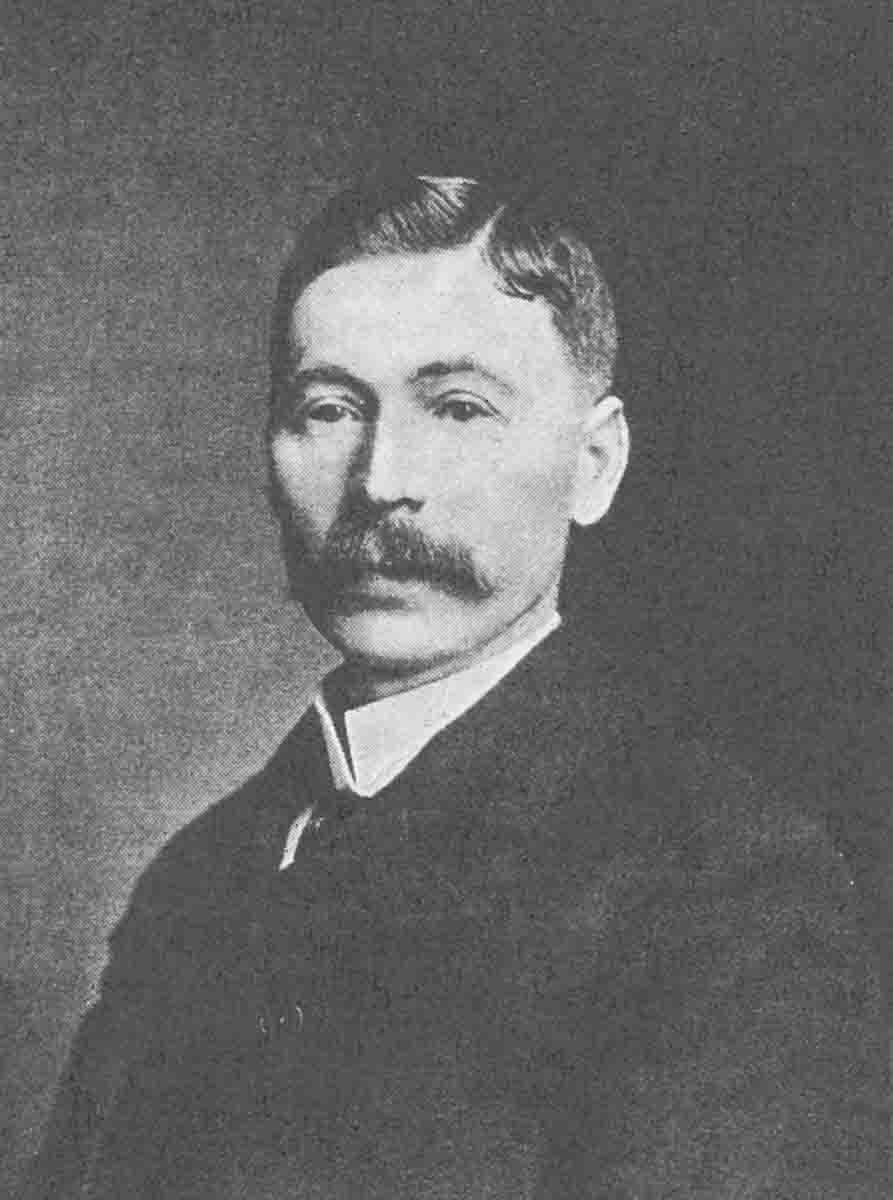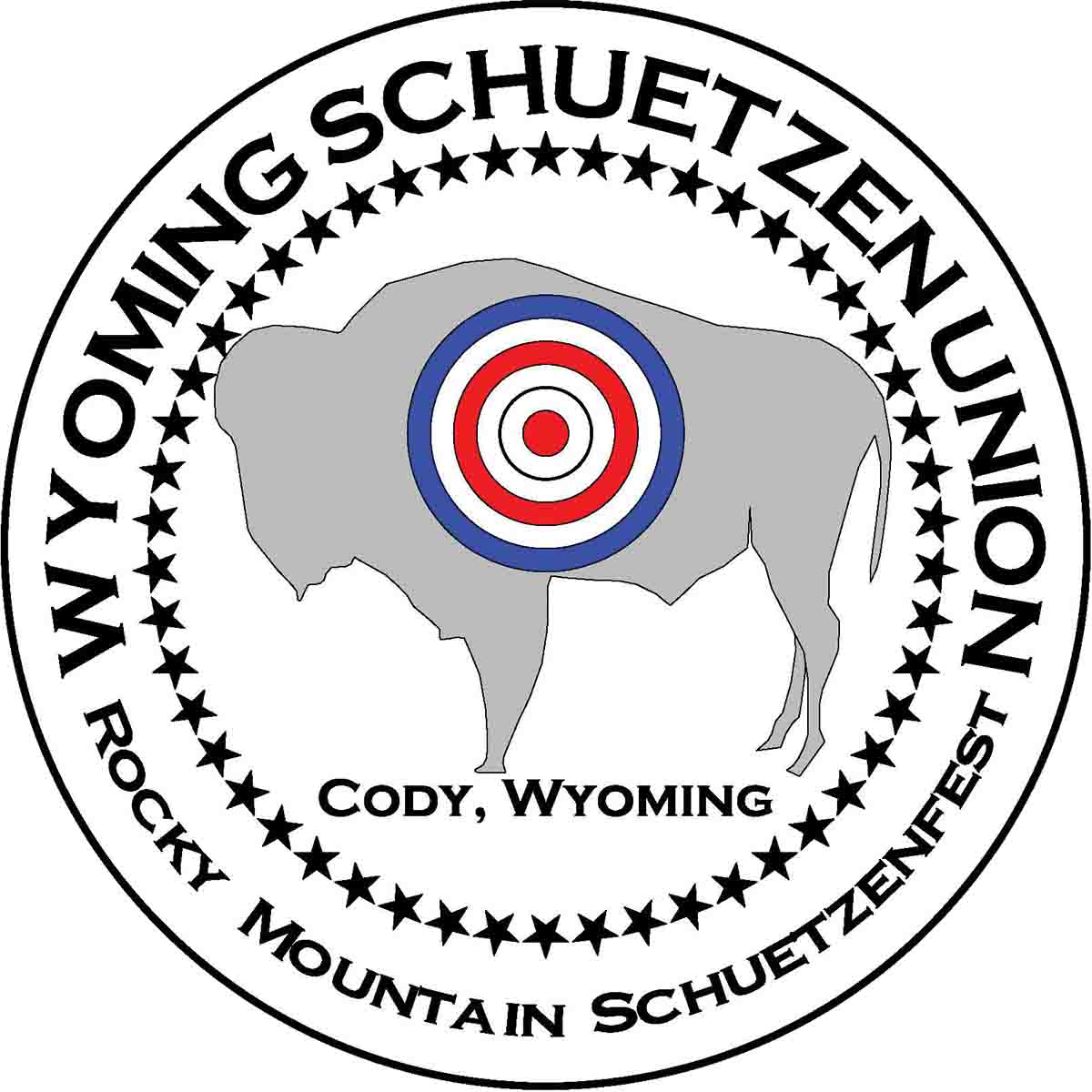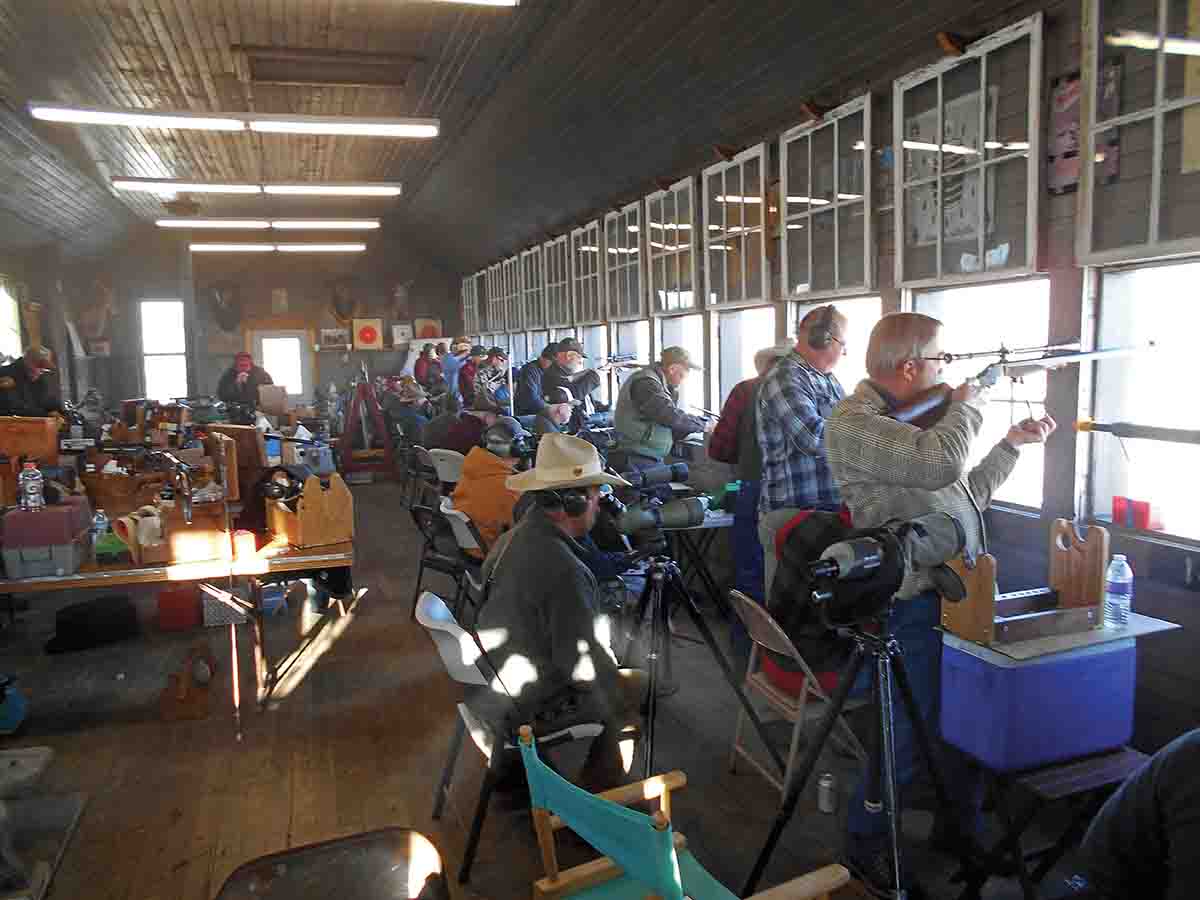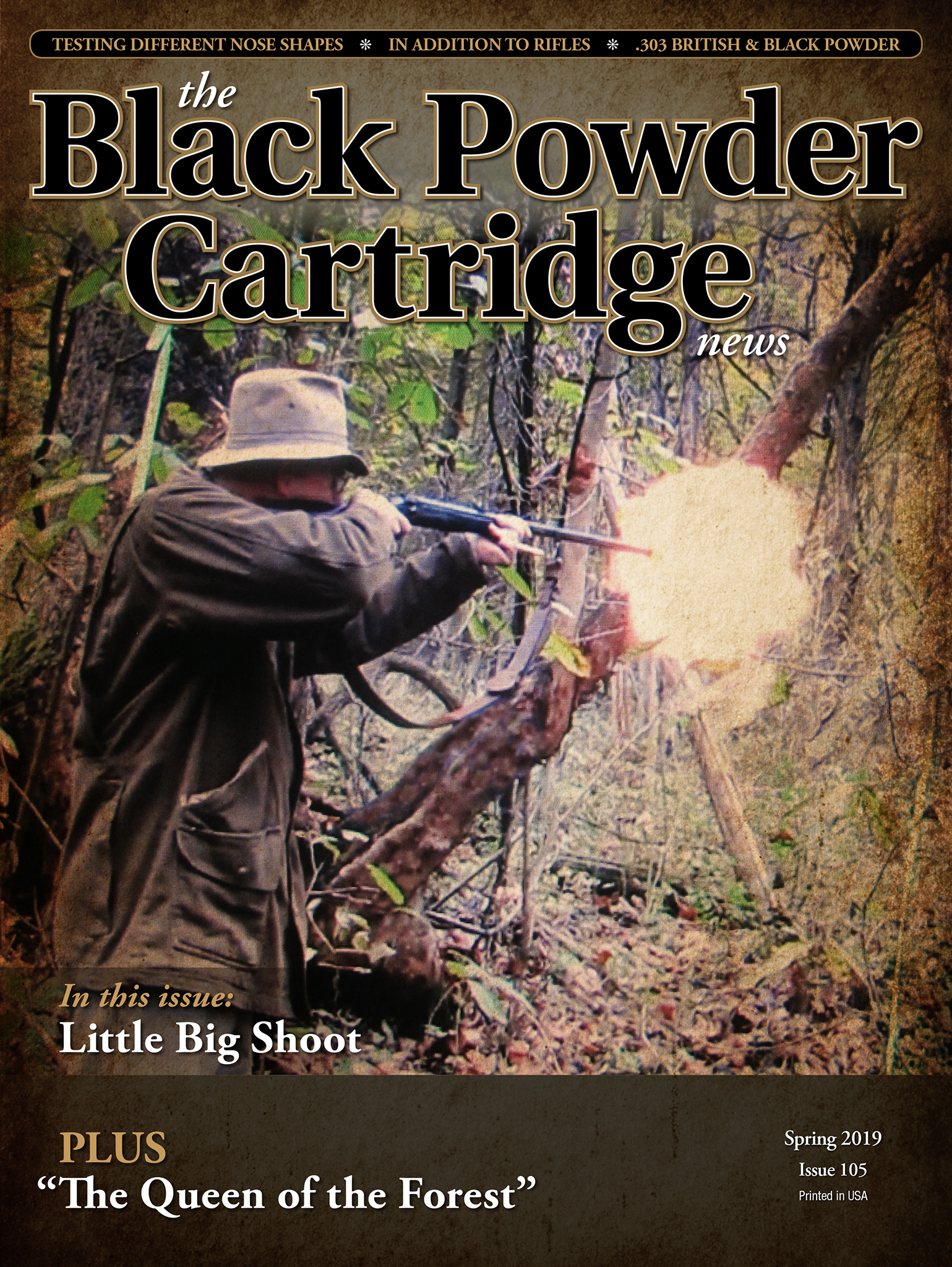The Wyoming Schuetzen Union's Center Shot
Peter Bergerson - Cheyenne Rifleman
column By: Steve Garge | April, 19
It is a regular habit of mine to peruse back issues of Shooting and Fishing magazine. There is so much information contained therein that I’m constantly amazed and entertained. These gems were found in the June 1, 1899 edition regarding the rifleman/gunsmith Peter Bergerson of Cheyenne, Wyoming, and his efforts at breaking the national offhand record shot on the Standard American target.
Mr. Bergerson
And His Great Score

The members of the Cheyenne Rifle Club have long thought that Peter Bergerson, of this club, would some day tie or break the record of offhand rifle shooting; but when the six members of the Cheyenne team repaired to the range May 21 to compete for the Winchester schuetzen rifle offered by Outdoor Life as a prize for the best aggregate team score, and found that the wind, a 4 o’clock, shifted so, that it required from 2 to 3¾ points of wind on .38-55 rifles, they little expected that anything like a record would be made. However, after four scores had been shot, the wind steadied down, and Mr. Bergerson made the following score, at 200 yards, strictly offhand, on the Standard target: 8, 10, 10, 10, 10, 10, 10, 10, 10, 9 = 97
As some members often wish to shoot rest scores while others are shooting offhand, the marker is always instructed to mark the 11 and 12. When an 11 or a 12 is made in offhand work, the 10 is placed in the regular space and the higher figure placed above it in the form of a fraction. Mr. Bergerson’s score on the rest target was: 8, 11, 11, 11, 12, 12, 10, 11, 12, 9 = 107
As to the correctness of the score, would say that the targets were new that morning, and that the marker has had several months experience. I also enclose affidavit of scorer, marker, and two of the shooters present.
Mr. Bergerson used a .32-40 barrel made by Geo. C. Schoyen, of Denver: a Ballard action stocked by himself; set trigger, without palm rest. The rifle weighs about 12 pounds; black powder and a 200-grain lubricated bullet. This score was made on our regular club day.
– C. A. Shafer, Club Secretary
Cheyenne, Wyoming

On going to press we received the following additional information from secretary Shafer and president L.R. Tyson:
“Would like to change one or two of my statements in regard to the record score made by Mr. Bergerson on May 21. His bullets were of 216 grains weight instead of 200, and his rifle weighed 11 pounds 5 ounces instead of 12 pounds. His powder was 42 grains of FFFg Dupont black.
“I enclose herewith statement of the weather bureau, located at this city. Our range faces exactly the southeast, so he had an almost exact crosswind of twenty miles per hour velocity.
“In regard to Mr. Bergerson: He is forty-six years old. He was born in Christiania, Norway, emigrating to this country when twenty-three years of age. He is an expert gunmaker, having learned his trade in the land of his nativity. He has very fine eyes and is doubtless one of the most expert men in straightening rifle barrels and finishing the interior of them of any man in the country. During the year 1898 he made three scores of 96 and several of 95, all offhand and at 200 yards, on the Standard American target.”
The weather bureau at Cheyenne, W. S. Palmer, section director for Wyoming, certifies that the records of his office show that “on May 21, 1899, the record of the wind velocity at this station between 11:45 A.M. and 12:30 P.M. shows the velocity to have been between nineteen and twenty-two miles per hour, the direction being from the west-southwest.”-Ed.

To give a little perspective, $65 in 1899 would be the equivalent of roughly $1973 today. A pretty nice prize, and I’m sure there were many riflemen having a go at winning it.
Setting a new offhand record would also be some serious advertising for any gunsmith and obviously bring increased business Bergerson’s way. The most notable thing about Bergerson’s shooting was doing it in a 20-mph crosswind with a .32-40 and a 216-grain bullet. I’m sure that many of you who have used the .32-40 with black powder were interested to see that he used FFFg powder. Much finer than what is generally recommended, I have also found FFFg to work well in my .32-40 rifles.
We should also mention that Bergerson kept all his shots, save one, in the 9-ring, which on the Standard American target measures 5.54 inches. He shot eight consecutive 10s and that ring measures 3.36 inches. Pretty impressive shooting, especially in a 20-mph crosswind, using a .32-40, iron sights and no palm rest.
There was much rivalry between the Denver Rifle Club and the Cheyenne Rifle Club, some of it over the years becoming quite bitter. Peter Bergerson was for many years one of the bright lights associated with the Cheyenne Club and I’m sure he was regarded by many riflemen in the area as their “in-house” gunsmith. If your travels take you to Cody, Wyoming, you can see a Peter Bergerson .32-40 Ballard match rifle in the display of Ballard firearms at the Buffalo Bill Center of the West.
20th Annual Jim Gier Memorial Schuetzen Match
Butte Gun Club - Rocker, Montana
December 8-9, 2018
There are several really good Schuetzen matches that are still being annually held around the country. I don’t want to write anything that may diminish them in any way, but I must say there is something special about the Butte Schuetzen house and the Jim Gier Memorial Schuetzen Match. Judging by the number of enthusiastic competitors that drive long distances in the middle of winter to enter, it doesn’t appear I am the only one who thinks that way. This was the 20th annual Jim Gier Memorial Match, so myself, and friend Michael Rix felt fortunate for the opportunity to attend.
Thirty-eight riflemen and one “rifle lady” competed this year. A variety of states were represented with shooters coming from as far away as California. Schuetzenmeister Butch Ulsher and his right-hand man, Trent Schutte, had the range and Schuetzen house in top shape. The sounds of the muffled conversation with gunfire, the smell of black powder, Kielbasa sausages cooking on the ancient army surplus stoves, as well as the view through the portholes where so many riflemen have shot over the last 100 years gives an aura that truly must be experienced to be appreciated.

The Jim Gier Memorial Match is a bit of a “winner takes all” format. Butch breaks the shooters into two classes, that being Iron Sight or Scope, and he mentions second and third places at the awards ceremony, but there are no prizes for any place other than first place and there are no door prizes. There was a group of shooters near the top of the Scope Class this year. Jen Oliva was pleased to earn third place in Scope Class with a 1890, while Lee Lewis shot a solid 1907 to be in second place. For those that think this sport is only for guys or young shooters, I would like to point out that Jen is a lady and Lee recently celebrated his 81st birthday. Kind of shoots holes in a couple of good excuses, doesn’t it? I was pleased to see my new friend Kevin Ericksen shoot a 1936 to earn the trophy for 1st Scope. Kevin is a relative newcomer to Schuetzen matches and under the careful tutelage of Pat Bowland he has come a long way. I am sure we will continue to see him in the winner’s circle.
We saw an ample number of Iron Sight entries again this year. I enjoy shooting iron sights and am always glad to see others lay the “cheater tube” aside and join me. Third place Iron Sight went to Johnny Spratling with a 1734, while second place went to Bob Kinna with a 1772. I was quite pleased to shoot well enough to earn the 1st Iron Sight trophy again this year. As what has been given to the winners over the last 19 years, the High Scope and Iron Sight shooter receive a pane of glass from the Schuetzen house that is etched with an image of the house, as well as the shooters name, class, score and “Jim Gier Memorial Match.” It is truly an iconic trophy that any rifleman would be honored to possess. Thank you to Butch, Trent, the Butte Gun Club and all those that keep this tradition alive. - Cody Smith
.jpg)
.jpg)
.jpg)


